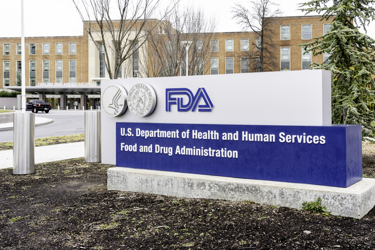Cell & Gene Therapies: An Overview Of FDA Regulatory Considerations For 2024
By Emily Marden and Kelly Cho, Sidley Austin LLP

As most in the biotech industry know, cell and gene therapies (CGT) are regulated in the U.S. as biological products by FDA’s Center for Biologics Research and Evaluation (CBER) and require approval of a biologics license application (BLA) under Section 351 of the Public Health Service Act, prior to being marketed.
In recent years, there has been a growing number of INDs each year, indicating the initiation of clinical studies. In 2019, FDA predicted that by year 2025, it expects to approve 10 to 20 CGTs a year.1
It remains to be seen whether FDA and industry will meet this goal, though it is worth noting that last year, FDA approved seven CGTs, bringing the total to 35 approved to date.2 Notably, after expressing some frustration with the pace of CGT approvals, FDA recently launched a number of initiatives and programs for these therapies in an explicit effort to bring approved CGTs to patients sooner. In this article, we outline key regulatory developments relevant to sponsors seeking regulatory approval of CGTs for commercialization in the U.S.
A New “Super Office”
In February of 2023, FDA created a “super office” within CBER called the Office of Therapeutic Products (OTP) to meet the increase in workload from CGTs.3 OTP is composed of as many as six offices overseeing 14 divisions and 33 branches.4 The new structure is aimed at aligning expertise on different types of therapies within the center, which will ensure more consistent and timely advice for sponsors. For example, OTP contains an office dedicated to the manufacturing of gene therapies (Office of Gene Therapy Chemistry, Manufacturing and Controls [CMC]) and a separate office dedicated to manufacturing of cell therapies (Office of Cellular Therapy and Human Tissue CMC). CBER is also seeking to add 125 new staff members in OTP to meet the workload associated with review of CGTs.5 With this reorganization, FDA now anticipates that it is well poised for the increase in CGT applications.
Managing Safety Concerns
FDA has long taken the position that CGTs raise unique safety considerations as compared to other therapies due to their inherent potential for prolonged biological activity.
Long Term Follow-Up of Clinical Subjects and Patients
To that end, FDA has required sponsors to build in consideration of long-term safety effects throughout the development process.6 In addition, FDA has made clear that it expects sponsors to conduct long-term follow-up (LTFU) studies for as long as 15 years on clinical subjects to track delayed adverse events.7 These obligations can be burdensome and even impractical at times as development programs wind down and companies go out of business.
The FDA appears to acknowledge these challenges, while reiterating the importance of ongoing safety monitoring. In new guidance documents issued this year, FDA recommends that sponsors provide the agency “a plan [] for follow-up, including funding, in the event the sponsor ceases to operate or decides to inactivate, transfer, or withdraw the IND."8 Notably, Nicole Verdun, the new director of OTP, signaled some potential flexibility in the LTFU expectations last year when she acknowledged the practical considerations associated with LTFU. The agency is considering hosting a public meeting to invite stakeholder input on these challenges.9
Clinical Holds
FDA continues to issue frequent clinical holds for CGT trials. Clinical holds are orders issued by FDA to pause a newly proposed or ongoing clinical investigation due to safety concerns. These holds can delay the clinical development program and result in serious financial repercussions, especially for smaller biotechs. Often, sponsors can work with FDA, for example by submitting the necessary analyses or documentation or amending the protocol to address FDA’s concerns. According to FDA, among the 585 CGT INDs newly submitted to FDA in 2021-2023, as many as 126, or roughly 20%, were placed on clinical hold within the initial 30 days.10 Overall, 40% of all FDA clinical holds in recent years have been for CGT studies,11 although these therapies constitute a much smaller portion (likely around 8%) of drugs in development.12
The number of CGT clinical holds may decline in the near future. The new “super office” OTP is expected to allow more timely and improved interactions between review staff and sponsors, bringing down the number of clinical holds.13 Such efforts are likely to be heightened by pressure from members of Congress, who have called on CBER to avoid using clinical holds as a means to gain more time to review a clinical protocol.14
Availability Of Expedited Pathways
CGTs are eligible for all of FDA’s expedited pathways for small molecule drugs and other biological products (i.e., accelerated approval, Breakthrough Therapy designation, Fast Track designation, and priority review) and for Regenerative Medicine Advanced Therapy (RMAT) designation, which is designed to expedite approval of regenerative medicine therapies.
CBER has recently explicitly stated that it intends to rely more heavily on the accelerated approval pathway for gene therapies. Toward this end, CBER leadership recently stated that a single-arm study based on a biomarker endpoint, backed by an animal model to show correlations to reduced levels of a given protein, may be sufficient for accelerated approval, particularly for pediatric rare diseases where conducting a randomized or placebo-controlled trial is difficult.15 CBER leadership also signaled openness to exercising a more flexible approach to the use of a surrogate endpoint or intermediate clinical endpoint and embracing a measure of uncertainty as to whether these endpoints do indeed predict clinical benefit.16
An important condition of the accelerated approval pathway is that following approval, sponsors must verify clinical benefit. For this requirement, CBER intends to take advantage of the increased flexibility provided for RMAT-designated therapies by the Cures Act17 and consider accepting continued follow-up of subjects from the pivotal trial to provide the confirmatory evidence, rather than the conventional approach of requiring sponsors to conduct an additional clinical study. For these gene therapies, then, “a confirmatory trial could simply be following the cohort [the sponsor enrolled] in [its] registration trial.”18
While increased availability of the accelerated approval pathway opens new opportunities for sponsors, it also poses some risks. Notably, the data generated through accelerated approval may satisfy FDA for purposes of approval but may be insufficient for payers for purposes of reimbursement and coverage.19 In addition, as acknowledged by CBER in pushing for greater use of the accelerated approval pathway, it is likely that certain of the therapies that initially were shown to be safe and effective may upon further study fail to verify clinical benefit and ultimately be withdrawn.20 The recent Food and Drug Omnibus Reform Act (FDORA) of 2022 has empowered FDA’s withdrawal authority by streamlining the accelerated approval withdrawal process and making it less onerous for the agency to bring about these proceedings.
Increased Opportunity For Interactions With FDA
Lastly, there are many opportunities for sponsors of CGT to seek and obtain FDA’s feedback throughout the drug development process. Such meetings can facilitate a BLA that meets FDA expectations. For example, the RMAT designation offers “early interactions to discuss any potential surrogate or intermediate clinical endpoint to be used to support accelerated approval,” along with benefits also available in other expedited pathways, such as the supervision of the agency’s senior managers and experienced review staff and guidance to facilitate an efficient development program.21 These interactions are intended to enable sponsors to obtain the agency’s feedback on novel surrogate endpoints and other key clinical trial design issues before the trials are underway, better aligning expectations and helping to mitigate the risk of unnecessary delay in development.
Additional FDA feedback is available for sponsors of CGT through FDA’s INTERACT program. This program is intended to provide agency feedback at an early stage of development, prior to conducting key nonclinical studies and filing an IND.22 Examples of issues that can be addressed include the design of IND-enabling toxicity studies, complex manufacturing technologies or processes, and the development of innovative devices used with a biological product.23 Finally, there may be additional opportunities for FDA meetings through the new Type D meetings, which can be scheduled sooner than other types of regulatory meetings (i.e., Types B, B (EOP), and C) and allow sponsors to discuss a limited set of issues with the agency (typically not more than two) or request a follow-up to an issue raised during a previous formal meeting.24
Outlook
These recent regulatory developments offer a hopeful outlook for CGTs as we witness a surge of these therapies in the pipeline as well as increasing interest from patients and healthcare providers. As the CGT technology continues to develop and more therapies undergo FDA’s review, the agency is constantly communicating its thoughts or expectations through guidance documents and podium statements. We advise CGT sponsors to stay abreast of FDA’s evolving positions as they plan their development programs and prepare for interactions with the agency.
References
- See FDA Statement, Statement from FDA Commissioner Scott Gottlieb, MD, and Peter Marks, MD, Ph.D., director of the Center for Biologics Evaluation and Research, on new policies to advance development of safe and effective cell and gene therapies (Jan. 15, 2019), https://www.fda.gov/news-events/press-announcements/statement-fda-commissioner-scott-gottlieb-md-and-peter-marks-md-phd-director-center-biologics.
- See FDA, Approved Cellular and Gene Therapy Products (Feb. 21, 2024), https://www.fda.gov/vaccines-blood-biologics/cellular-gene-therapy-products/approved-cellular-and-gene-therapy-products.
- See FDA, Establishment of the Office of Therapeutic Products (March 15, 2023), https://www.fda.gov/vaccines-blood-biologics/cellular-gene-therapy-products/establishment-office-therapeutic-products.
- See id.
- See Letter from Brett Guthrie and Anna Eshoo to Peter Marks at 1 (March 26, 2023), https://guthrie.house.gov/uploadedfiles/fda_cell_and_gene_therapy_cber_letter_3.26.23.pdf.
- See FDA, Guidance for Industry, Preclinical Assessment of Investigational Cellular and Gene Therapy Products at 26 (November 2013), https://www.fda.gov/media/87564/download.
- See FDA, Guidance for Industry, Long Term Follow-Up After Administration of Human Gene Therapy Products (January 2020), https://www.fda.gov/media/113768/download.
- FDA, Guidance for Industry, Human Gene Therapy Products Incorporating Human Genome Editing at 15 (January 2024), https://www.fda.gov/media/156894/download; FDA, Guidance for Industry, Considerations for the Development of Chimeric Antigen Receptor (CAR) T Cell Products at 33 (January 2024), https://www.fda.gov/media/156896/download.
- See US FDA Struggling With Long-Term Follow-Up Requirements for Gene Therapies, Pink Sheet (Oct. 18, 2023), https://pink.citeline.com/PS149041/US-FDA-Struggling-With-Long-Term-Follow-Up-Requirements-For-Gene-Therapies.
- See Letter from Kimberlee Trzeciak, Associate Commissioner for Legislative Affairs, FDA to Brett Guthrie (May 15, 2023) (on file with author).
- See Letter from Guthrie and Eshoo.
- See PhRMA, Cell and Gene Therapies (estimating 480+ CGTs in development as of June of 2022), https://phrma.org/Scientific-Innovation/Cell-and-Gene-Therapies; McKinsey & Company, Accelerating Clinical Trials to Improve Biopharma R&D Productivity (Jan. 22, 2024) (estimating 6,100 drugs in development in 2022), https://www.mckinsey.com/industries/life-sciences/our-insights/accelerating-clinical-trials-to-improve-biopharma-r-and-d-productivity.
- See US FDA Cell/Gene Therapy Office ‘Aggressively Recruiting’ Amid Reorg, Senior Staff Departures, Pink Sheet (Feb. 27, 2023), https://pink.citeline.com/PS147754/US-FDA-CellGene-Therapy-Office-Aggressively-Recruiting-Amid-Reorg-Senior-Staff-Departures.
- See Letter from Guthrie and Eshoo.
- See Gene Therapies Without Randomized Clinical Trials: Marks Outlines Rare Disease Development Path, Pink Sheet (Nov. 29, 2023), https://pink.citeline.com/PS149419/Gene-Therapies-Without-Randomized-Clinical-Trials-Marks-Outlines-Rare-Disease-Development-Path.
- See The Future of Accelerated Approval for FDA's Marks? More Rare Disease Drugs and No 'Hanging Chads,' Fierce Biotech (July 28, 2023), https://www.fiercebiotech.com/biotech/peter-marks-says-fda-now-has-better-sense-rare-disease-biomarkers-will-more-accelerated.
- See 21 U.S.C. § 356(g)(7)(C).
- FDA 'Leans In' to Accelerated Approval for Rare Disease Drugs, MedPage Today (May 19, 2023), https://www.medpagetoday.com/special-reports/exclusives/104594.
- See Gene Therapies Without Randomized Clinical Trials: Marks Outlines Rare Disease Development Path, Pink Sheet (Nov. 29, 2023), https://pink.citeline.com/PS149419/Gene-Therapies-Without-Randomized-Clinical-Trials-Marks-Outlines-Rare-Disease-Development-Path; U.S. FDA Wants to Help Sponsors Generate Evidence CMS Needs, But Won't Be An Intermediary, Pink Sheet (Oct. 24, 2022), https://pink.citeline.com/PS147209/US-FDA-Wants-To-Help-Sponsors-Generate-Evidence-CMS-Needs-But-Wont-Be-An-Intermediary.
- See Gene Therapies Without Randomized Clinical Trials: Marks Outlines Rare Disease Development Path, Pink Sheet (Nov. 29, 2023), https://pink.citeline.com/PS149419/Gene-Therapies-Without-Randomized-Clinical-Trials-Marks-Outlines-Rare-Disease-Development-Path.
- 21 U.S.C. § 356(g)(5).
- See FDA, OTP INTERACT Meeting (June 14, 2023), https://www.fda.gov/vaccines-blood-biologics/cellular-gene-therapy-products/otp-interact-meeting.
- See PDUFA Reauthorization Performance Goals and Procedures Fiscal Years 2023 Through 2027 at 21, https://www.fda.gov/media/151712/download?attachment.
- See id. at 21 and 24.
About The Authors:
 Emily Marden is senior counsel in law firm Sidley Austin's Global Life Sciences practice group. Her legal regulatory practice involves counseling clients at the cutting edge of technology, including cell and gene therapies, regenerative medicine, complex drugs and biologics, genomics and synthetic biology, as well as innovations in food and agriculture. In addition to her regulatory practice, Marden is an adjunct professor of law at New York University School of Law, where she co-teaches food and drug law and policy. She divides her time between Sidley’s New York and San Francisco offices and can be reached at emarden@sidley.com.
Emily Marden is senior counsel in law firm Sidley Austin's Global Life Sciences practice group. Her legal regulatory practice involves counseling clients at the cutting edge of technology, including cell and gene therapies, regenerative medicine, complex drugs and biologics, genomics and synthetic biology, as well as innovations in food and agriculture. In addition to her regulatory practice, Marden is an adjunct professor of law at New York University School of Law, where she co-teaches food and drug law and policy. She divides her time between Sidley’s New York and San Francisco offices and can be reached at emarden@sidley.com.
 Kelly Cho is a managing associate in law firm Sidley Austin's Global Life Sciences practice group. She advises clients on a wide range of FDA regulatory and compliance matters affecting drugs, biological products, medical devices, and other regulated products. This assistance extends to marketing authorization pathways, FDA review and approval processes, regulatory exclusivities, postmarket compliance, advertising, registration and listing, and supply chain matters. She is located in Washington, D.C. and can be reached at kcho@sidley.com.
Kelly Cho is a managing associate in law firm Sidley Austin's Global Life Sciences practice group. She advises clients on a wide range of FDA regulatory and compliance matters affecting drugs, biological products, medical devices, and other regulated products. This assistance extends to marketing authorization pathways, FDA review and approval processes, regulatory exclusivities, postmarket compliance, advertising, registration and listing, and supply chain matters. She is located in Washington, D.C. and can be reached at kcho@sidley.com.
